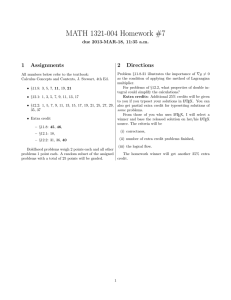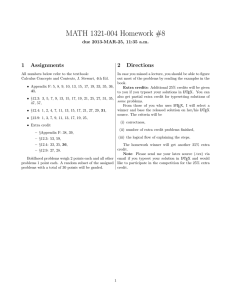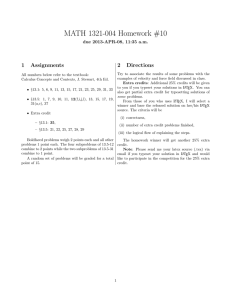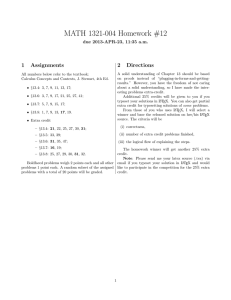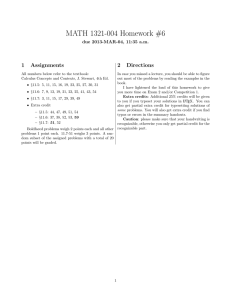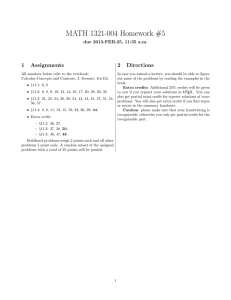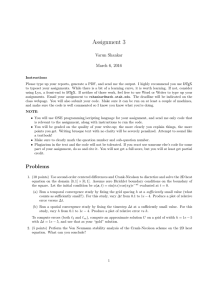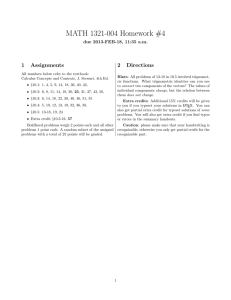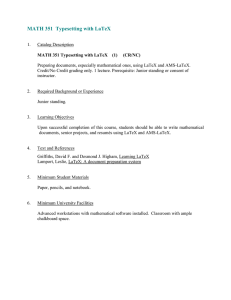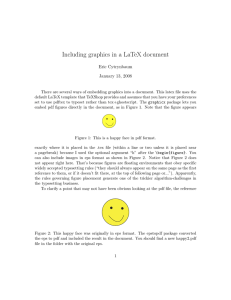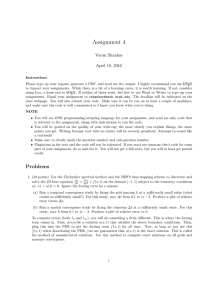MATH 1321-004 Homework #9 1 Assignments 3
advertisement
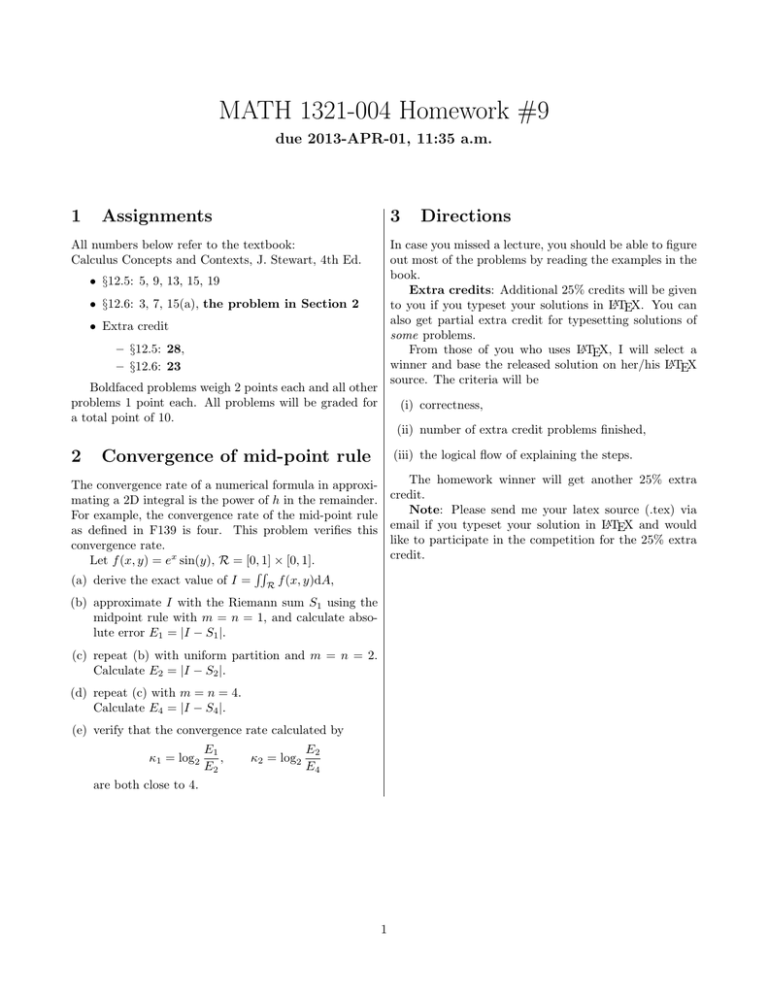
MATH 1321-004 Homework #9 due 2013-APR-01, 11:35 a.m. 1 3 Assignments Directions In case you missed a lecture, you should be able to figure out most of the problems by reading the examples in the book. Extra credits: Additional 25% credits will be given to you if you typeset your solutions in LATEX. You can also get partial extra credit for typesetting solutions of some problems. From those of you who uses LATEX, I will select a winner and base the released solution on her/his LATEX source. The criteria will be All numbers below refer to the textbook: Calculus Concepts and Contexts, J. Stewart, 4th Ed. • §12.5: 5, 9, 13, 15, 19 • §12.6: 3, 7, 15(a), the problem in Section 2 • Extra credit – §12.5: 28, – §12.6: 23 Boldfaced problems weigh 2 points each and all other problems 1 point each. All problems will be graded for a total point of 10. (i) correctness, (ii) number of extra credit problems finished, 2 Convergence of mid-point rule (iii) the logical flow of explaining the steps. The homework winner will get another 25% extra credit. Note: Please send me your latex source (.tex) via email if you typeset your solution in LATEX and would like to participate in the competition for the 25% extra credit. The convergence rate of a numerical formula in approximating a 2D integral is the power of h in the remainder. For example, the convergence rate of the mid-point rule as defined in F139 is four. This problem verifies this convergence rate. Let f (x, y) = ex sin(y), R = [0, 1] × [0, 1]. RR (a) derive the exact value of I = R f (x, y)dA, (b) approximate I with the Riemann sum S1 using the midpoint rule with m = n = 1, and calculate absolute error E1 = |I − S1 |. (c) repeat (b) with uniform partition and m = n = 2. Calculate E2 = |I − S2 |. (d) repeat (c) with m = n = 4. Calculate E4 = |I − S4 |. (e) verify that the convergence rate calculated by κ1 = log2 E1 , E2 κ2 = log2 E2 E4 are both close to 4. 1
